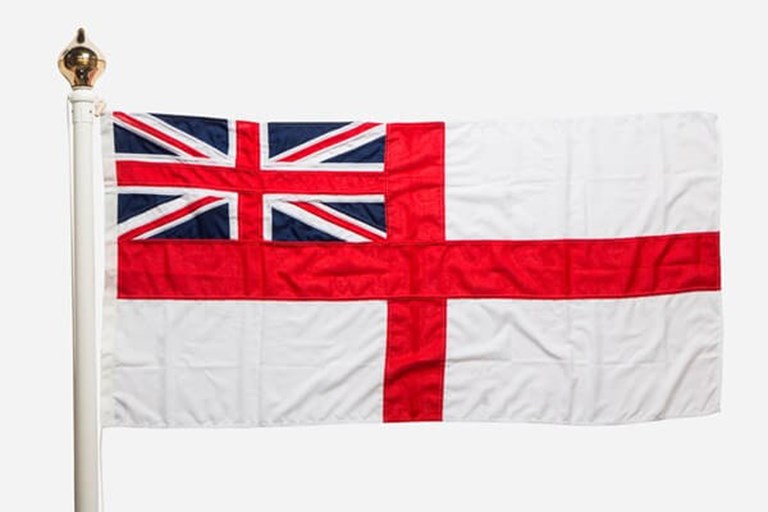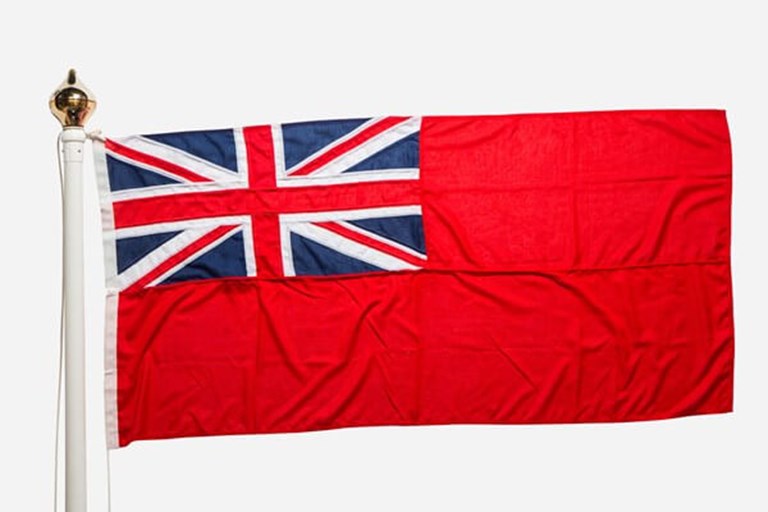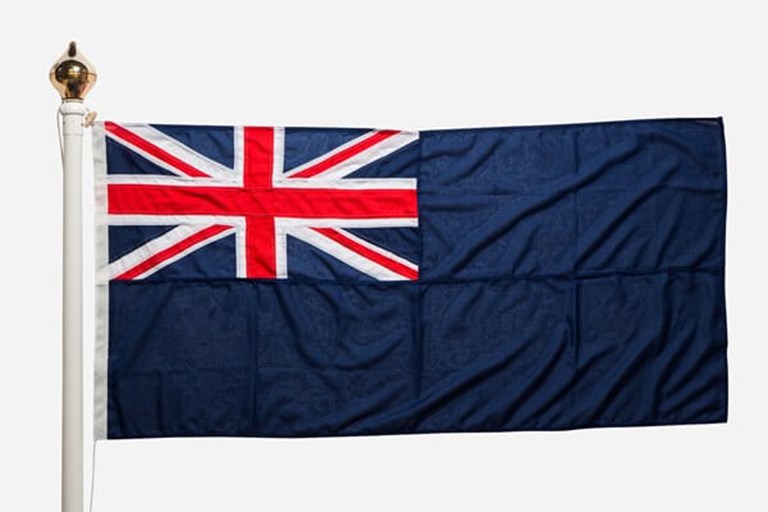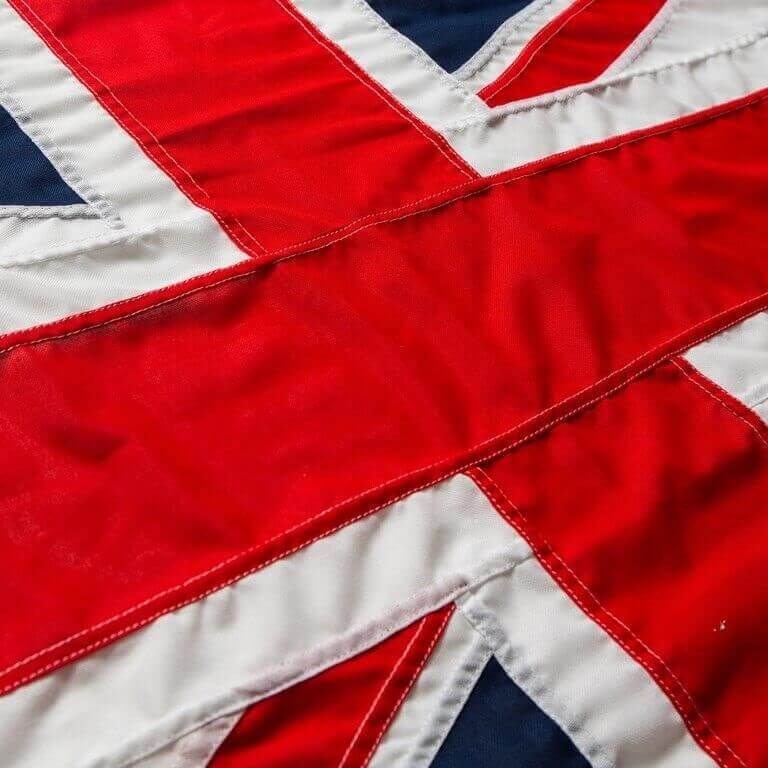Flag etiquette is considered a combination of law, good manners and tradition. At sea, flags also send a message and give an awareness to other vessels, making them a vital tool in safety at sea.
These include:
- Special or Privileged Ensigns
- What flag to put where
- Land flags
- Sizing your flags
It is a legal requirement for a UK flagged vessel to fly an ensign. This is a requirement as per the Merchant Shipping Act, in particular applied to entering or leaving foreign ports. In these cases, the correct flag is a standard Red Ensign which is the UK national maritime flag. The flying of this Ensign denotes the nationality of the vessel and should be flown at all times if possible.
Special or Privileged Ensigns
In addition to the Red Ensign, there is a White Ensign, a Blue and Light Blue Ensign, with some designs featuring badges too. These ensigns are considered ‘special’ or privileged and should only be flown with special permission and this authorisation is ultimately granted by Her Majesty The Queen.
If you are fortunate enough to be granted the appropriate permissions to fly one of these special ensigns you must fly in accordance with the issued warrant. These warrants often require the corresponding burgee to be displayed alongside the flag. In most cases these warrants can be granted to a Yacht Club which in turns gives members the appropriate permission to fly the Ensign under the conditions of the club’s warrant. This process usually begins with clubs issuing their members a permit.
What Flag To Fly & Where To Fly It
Ensigns
The Ensign should be worn as close to the stern of the vessel as possible, in the most senior position for any flag. In the case of a UK registered vessel, this would be the national maritime flag, otherwise known as the Red Ensign (unless entitled to wear a special or privileged Ensign.)
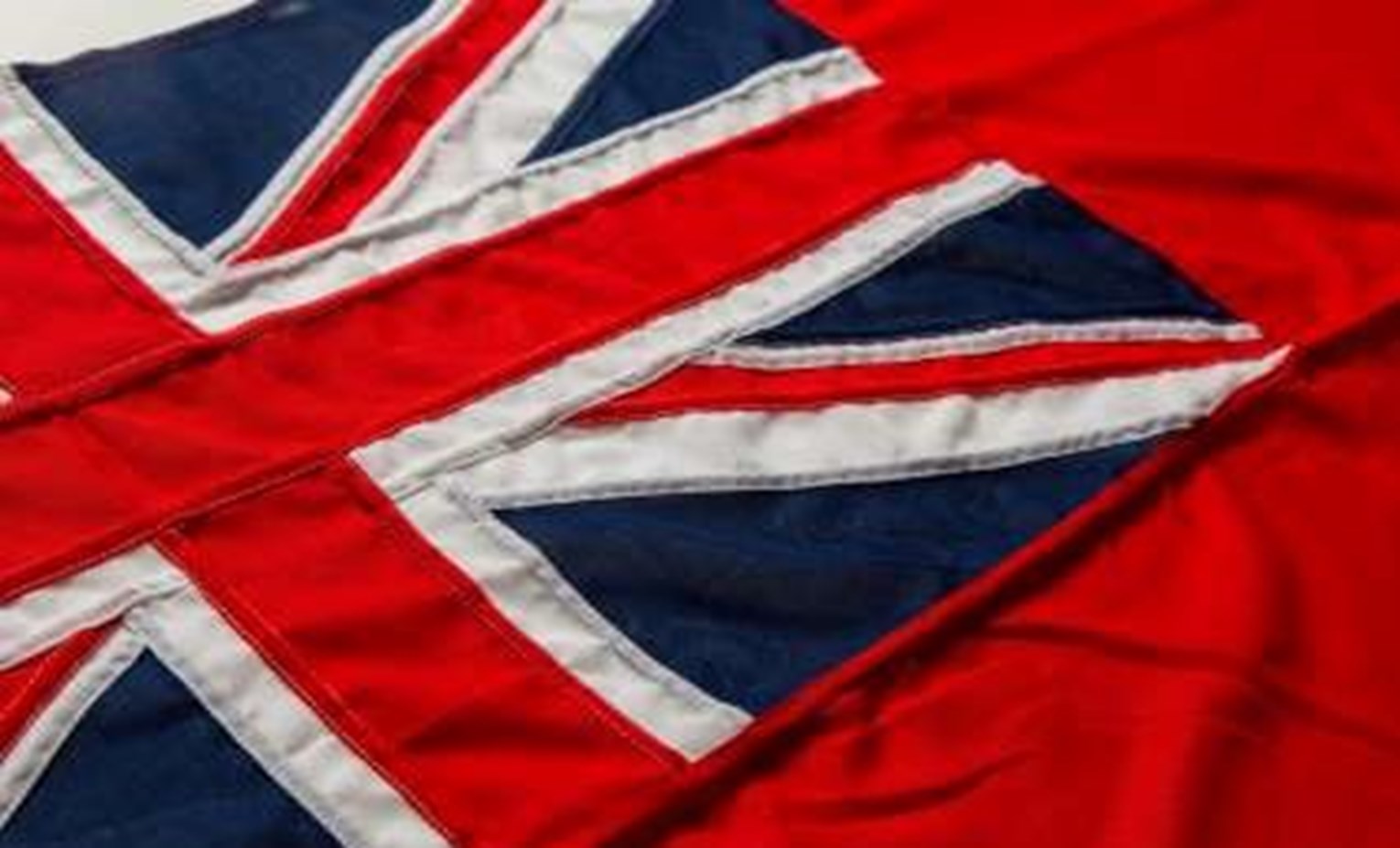
Special or Privileged Ensign
white-ensignWorn in accordance with the warrant and permit governing the flag’s use. If the warrant and permit requires, the corresponding burgee may also have to be flown in accompaniment.
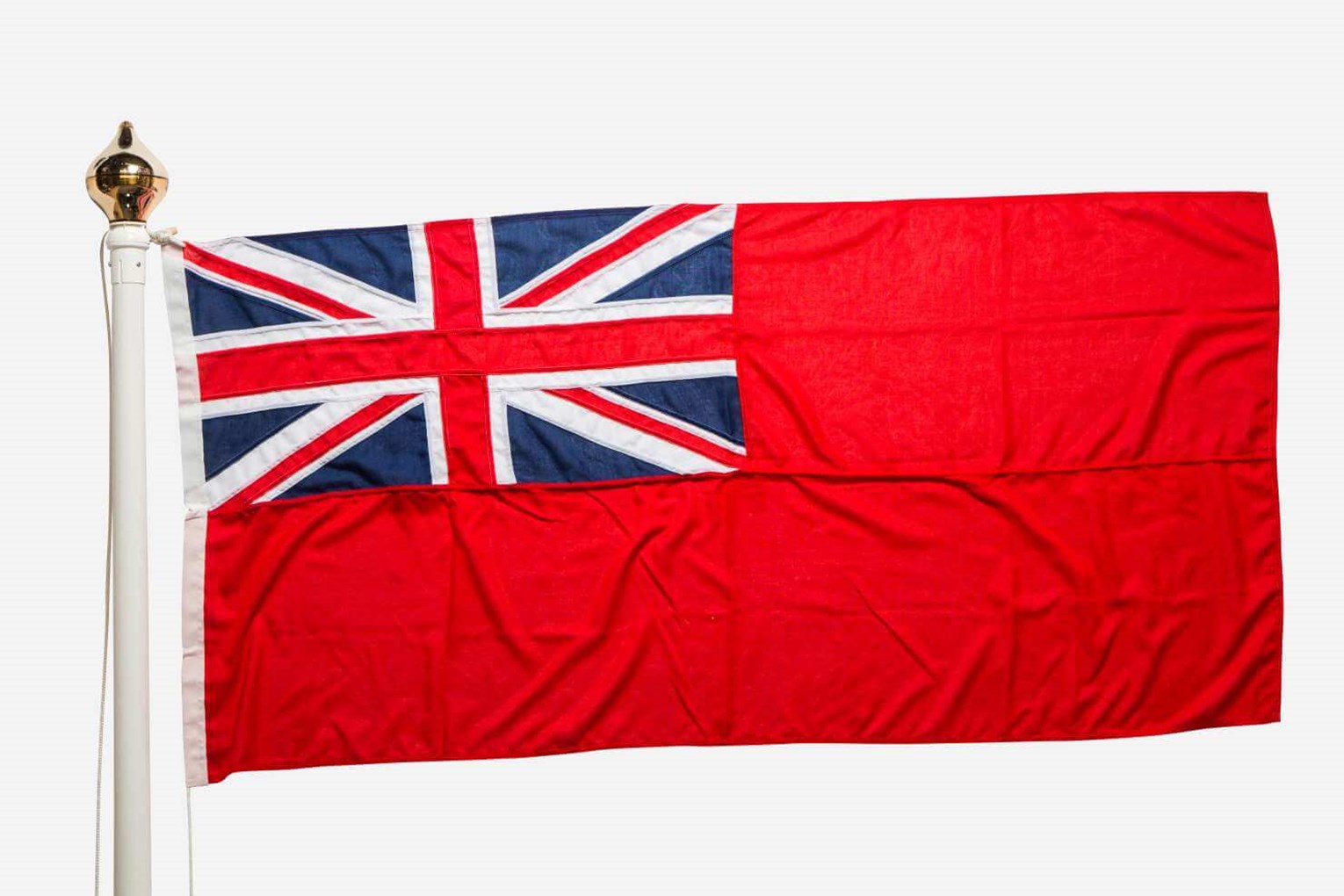
Burgees
The burgee takes the second most senior position on the vessel, which is normally the main masthead. Only one burgee may be flown on any vessel and no other flag should be flown above the burgee on the same halyard (flagpole rope).
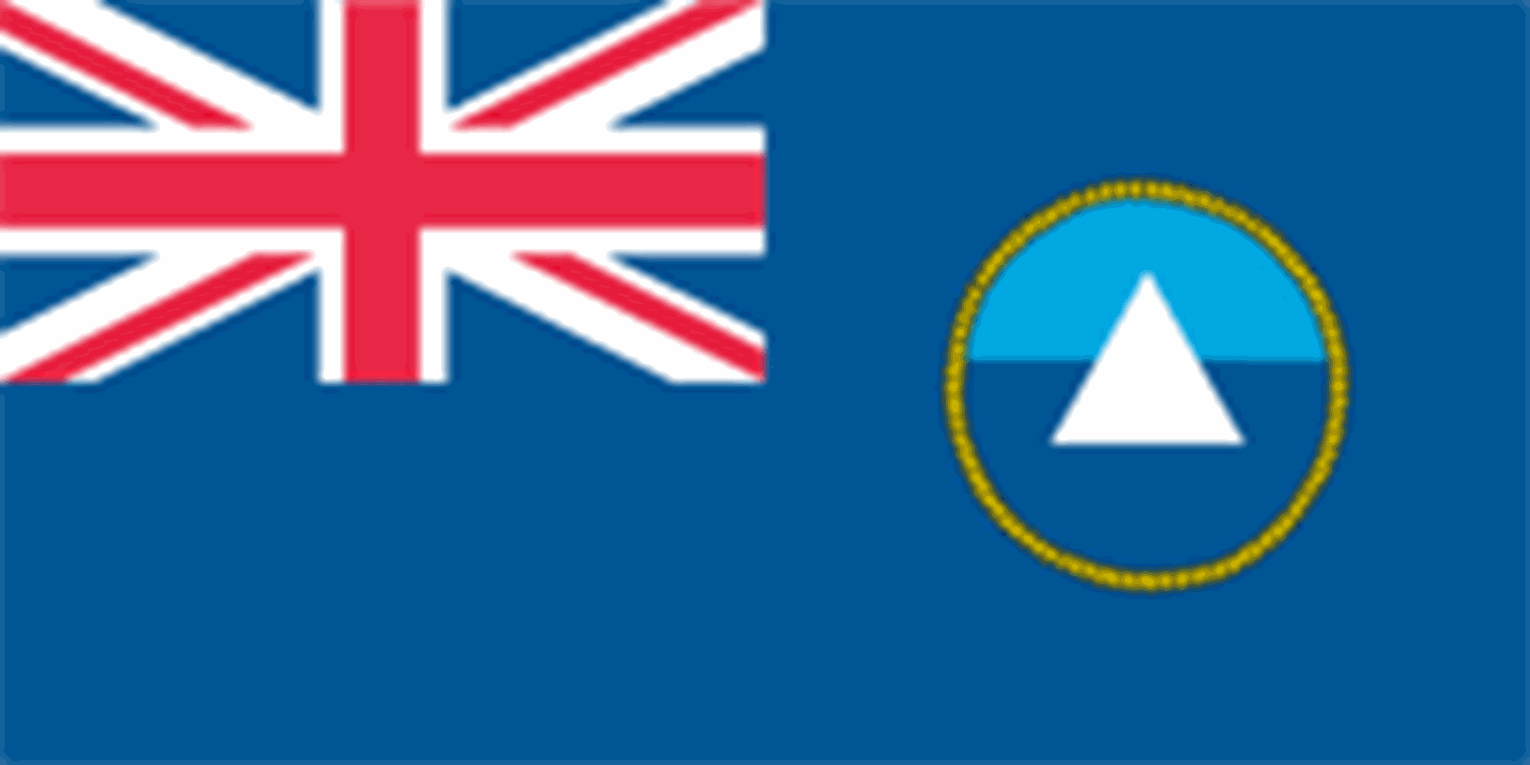
Courtesy Flags and Q Flags
The starboard spreaders are used for signalling. This is where both a national courtesy flag and the Q flag should be flown. Important Note: you should not fly any other flag above a national courtesy flag on the same halyard.
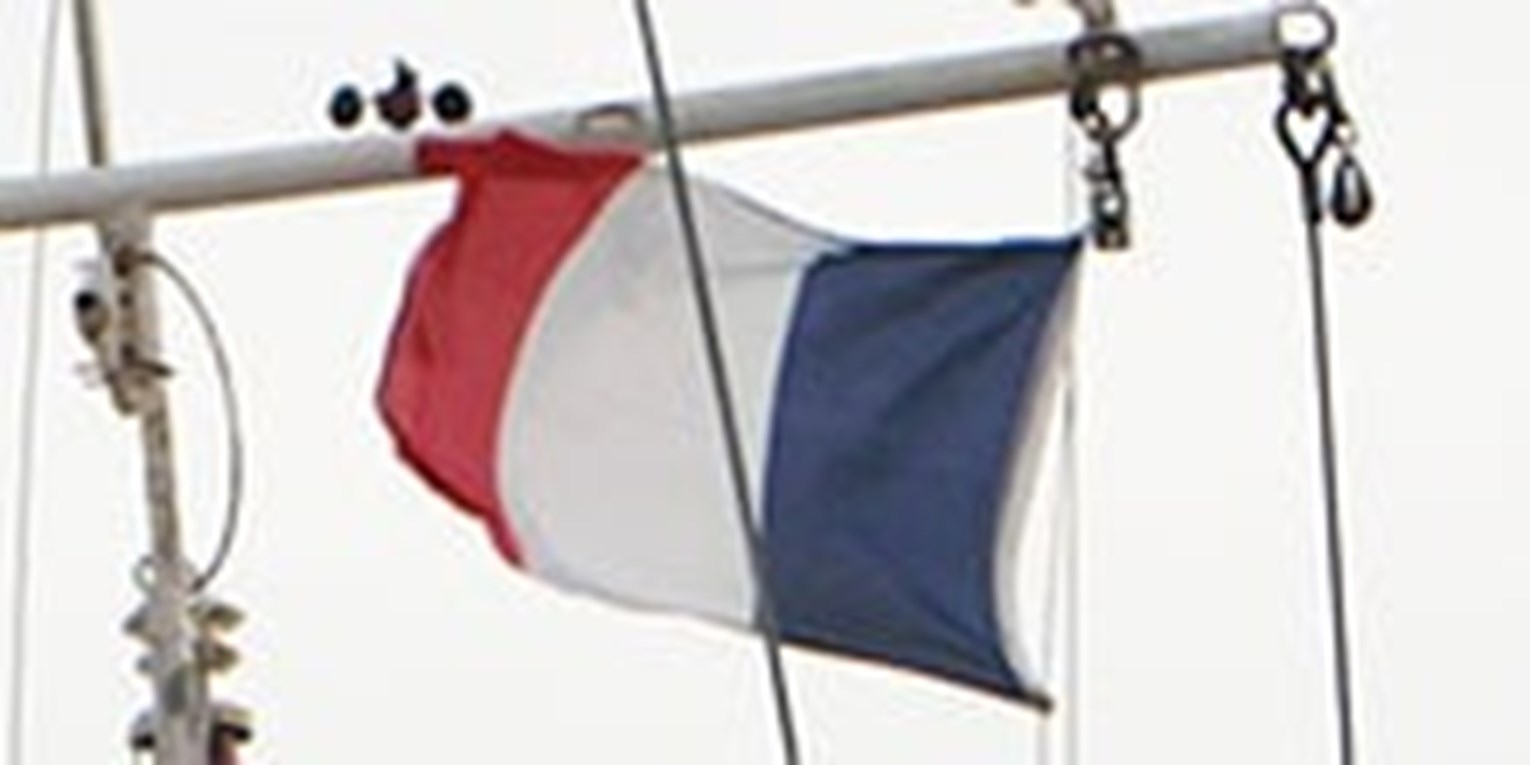
House Flags
House flags are flown from the port spreaders. A house flag may indicate membership of an association or society or may be to indicate membership of another club. More than one house flag may be flown on the port halyard. However, it is important to be aware of their order of seniority.
Land flags
Land flags, otherwise know as national flags. The Union flag, Welsh Dragon and the Crosses of St Andrew, St George and St Patrick are primarily land flags and should not be flown at sea. It’s important to remember that land flags can look like some signal flags and may cause confusion in this environment.
At sea the cross of St George is the flag of an Admiral and it should therefore not be flown by anyone else, without special dispensation. A vessel flying the St Andrew’s Cross could be mistaken as saying “my vessel is stopped and making no way through the water” as this is the meaning of code flag M which has the same design. The St Patrick’s Cross could be misinterpreted as code flag V “I require assistance”.
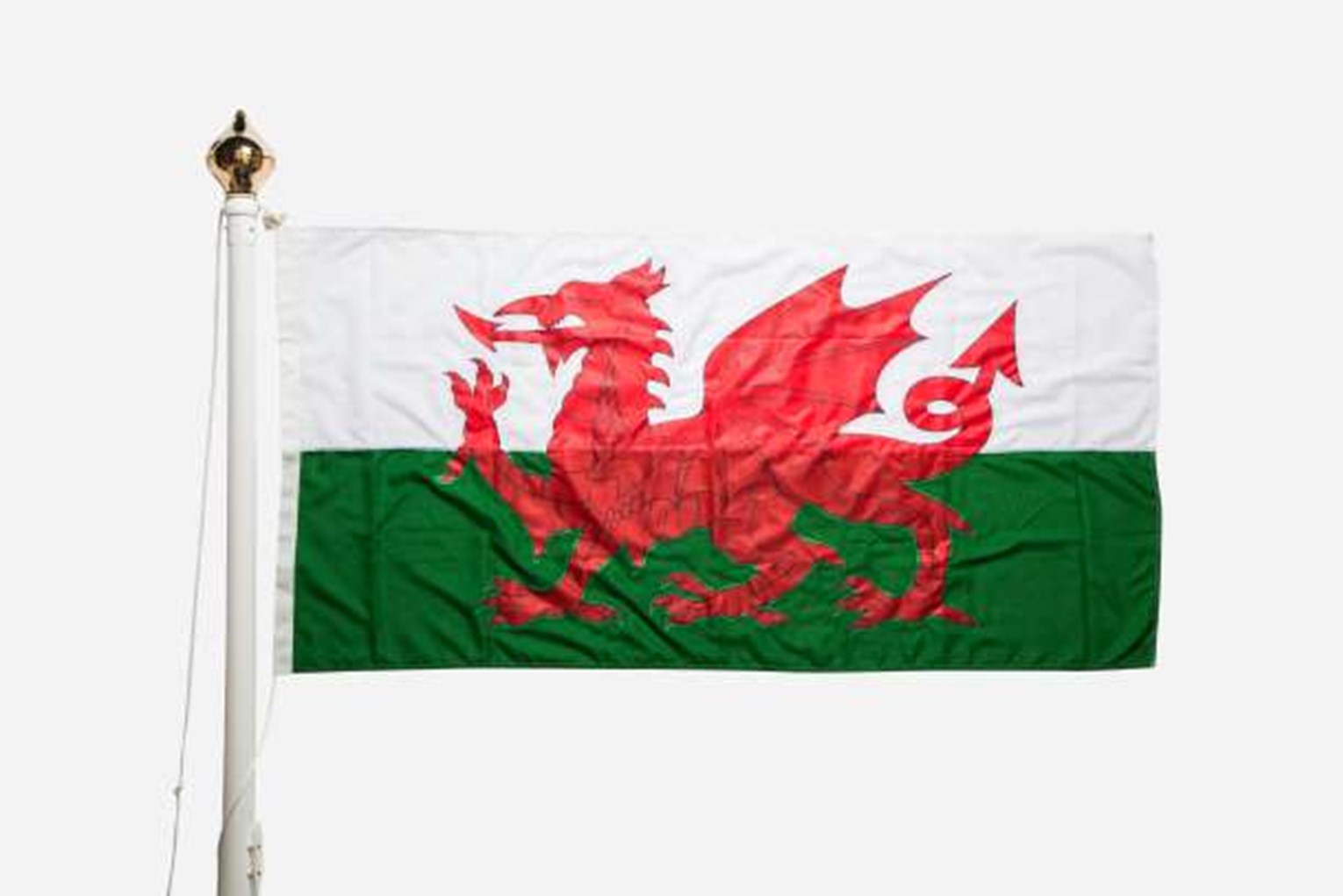
Sizing Your Nautical Flags
The sizes and condition of flags are important. They should never be tatty and should not hang too close to or in the water – whilst still being large enough to be seen. The best advice we can give is ‘whatever looks right’ as every situation and vessel presents a different challenge.
Finally, please be mindful of the fact that flying incorrect or inappropriate flags could lead to insult, either at home or abroad, by giving a signal you do not intend to give, or could lead you to a fine for breaking the law. The correct positioning and flying of a Vessel’s flags gives a clear signal to others which could prove critical in some situations.


